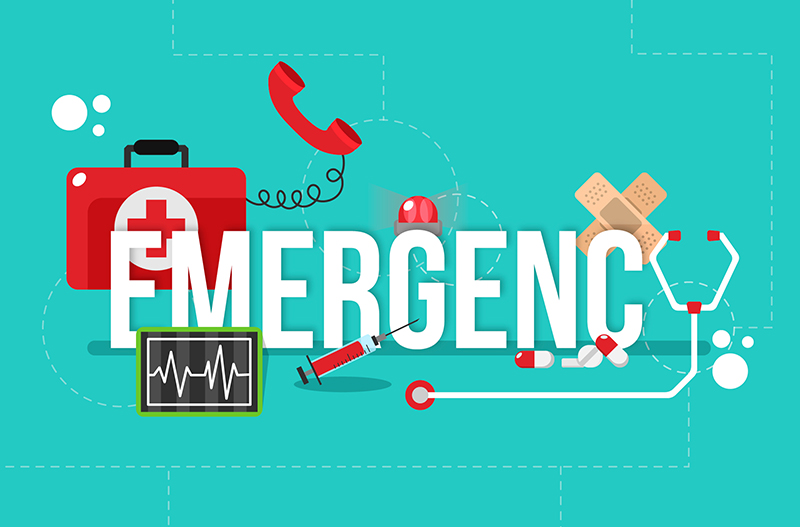Evaluation and management (E/M) CPT codes are reported on insurance claims by a wide range of specialties to obtain payment for services performed in the office or other outpatient setting. Medical billing and coding companies stay updated about the elements needed to determine the appropriate level of care based on chart documentation.
In 2021, the American Medical Association issued new guidelines and code descriptors for office and outpatient E/M codes, with one notable change being the removal of the History and Examination sections from the scoring process used to determine the E/M level of service. Starting Jan. 1, 2023, E/M services performed in outpatient and office settings will be carried over across all health care settings, including hospitals, emergency departments, nursing facilities and patients’ homes.
The 2023 CPT Documentation Guidelines for Evaluation and Management (E/M) services restructure the guidelines for the following E/M categories:
- Hospital Inpatient and Observation Care Services
- Consultations
- Emergency Department Services (ED)
- Nursing Facility Services
- Home Residence Services
- Prolonged Service with or without Direct Patient Contact on the Date of an E/M Service
At OSI, we can streamline your emergency department E/M coding and billing tasks.
Contact us today at (800) 670-2809! for more information.
E/M Changes for ED Services
The coding and documentation for E/M services in 2023 aims to reduce the administrative burden for providers. Here are the key changes:
- 2023 ED E/M definitions for codes 99281-99285 and reporting rules: The 2023 definitions for ED E/M codes 99281-99285 are:
99281: ED visit for the evaluation and management of a patient that may not require the presence of a physician or other qualified health care professional.
99282: ED visit for the evaluation and management of a patient, which requires a medically appropriate history and/or examination and straightforward medical decision making.
99283: ED visit for the evaluation and management of a patient, which requires a medically appropriate history and/or examination and low medical decision making.
99284: ED visit for the evaluation and management of a patient which requires a medically appropriate history and/or examination and moderate medical decision making.
99285: ED visit for the evaluation and management of a patient, which requires a medically appropriate history and/or examination and high medical decision making.
The 2023 documentation guideline changes do not impact the critical care codes (99291 and 99292).
Partner with OSI to optimize your emergency department coding and billing processes.
We’re available at (800) 670 2809!
There are new rules for determining ED E/M service level:
- Medical decision making (MDM) will determine ED E/M service level. History and Exam are required only as medically appropriate. In 2023, the prior requirements to document E/M services in the ED based on complete history, physical examination, and MDM have been removed. The new guidelines simply require a medically appropriate history and physical exam, which makes MDM the sole factor for code selection in 2023.
- MDM will still be based on the modified historic three MDM components: 1) number and complexity of problems addressed 2) amount and/or complexity of data to be reviewed and analyzed, and 3) risk of complications and or morbidity or mortality of patient management. In 2023, the highest two of three components of MDM will be used to select the level of an ED E/M code.
- The level of MDM concept will not apply to code 99281 since this level of service will not require the presence of a physician/other qualified health care professional (QHP).
- ED E/M services and Critical Care services may be reported together.
- Nursing staff may report 99281: To report 99281, nursing staff will need to ensure documentation of the service performed and clarify that the work they performed is not part of another separately reportable service. Code 99281 could be reported for removal of suture materials, dressing change, or any other separately reportable service if the provider is not reporting an E/M service during the same encounter (www.findacode.com).
- Time is NOT a factor when choosing ED levels of service: Since ED services are typically provided at different levels of intensity, often involving multiple encounters with several patients over an extended period of time, tracking accurate times spent on each patient would be nearly impossible during concurrent active management (www.acepnow.com).
- Medical necessity: The physician/QHP will have to consider whether the nature of the presenting problem supports the medical necessity of services rendered. Medical necessity will be the predominant criterion for selecting the level of ED E/M service.
The 2023 E/M revisions aim to simplify coding and documentation requirements for health care providers, reduce the administrative burden and improve patient health. Partnering with an experienced provider of emergency room billing services is a practical option for providers to ensure accurate reporting of services to avoid audits ensure appropriate reimbursement.






